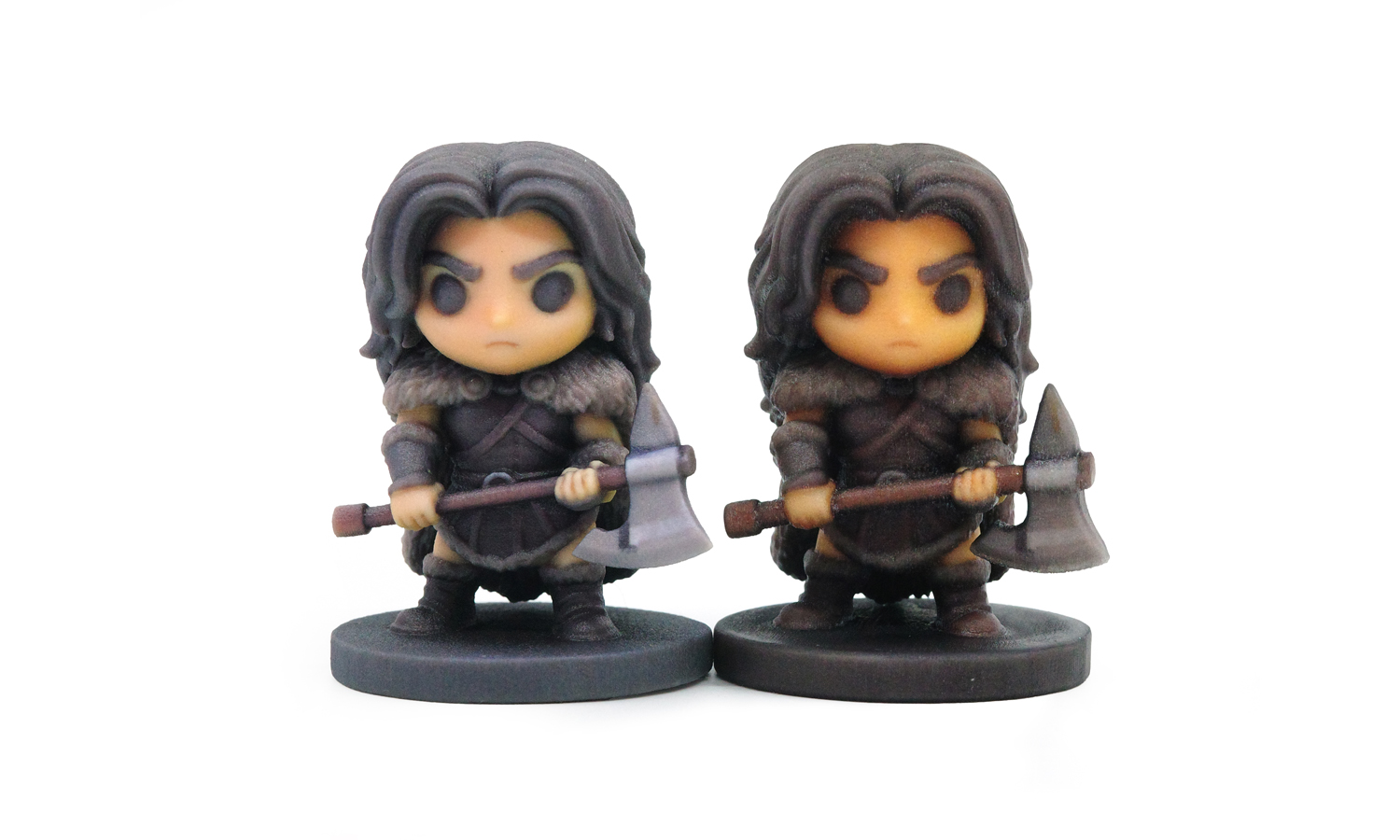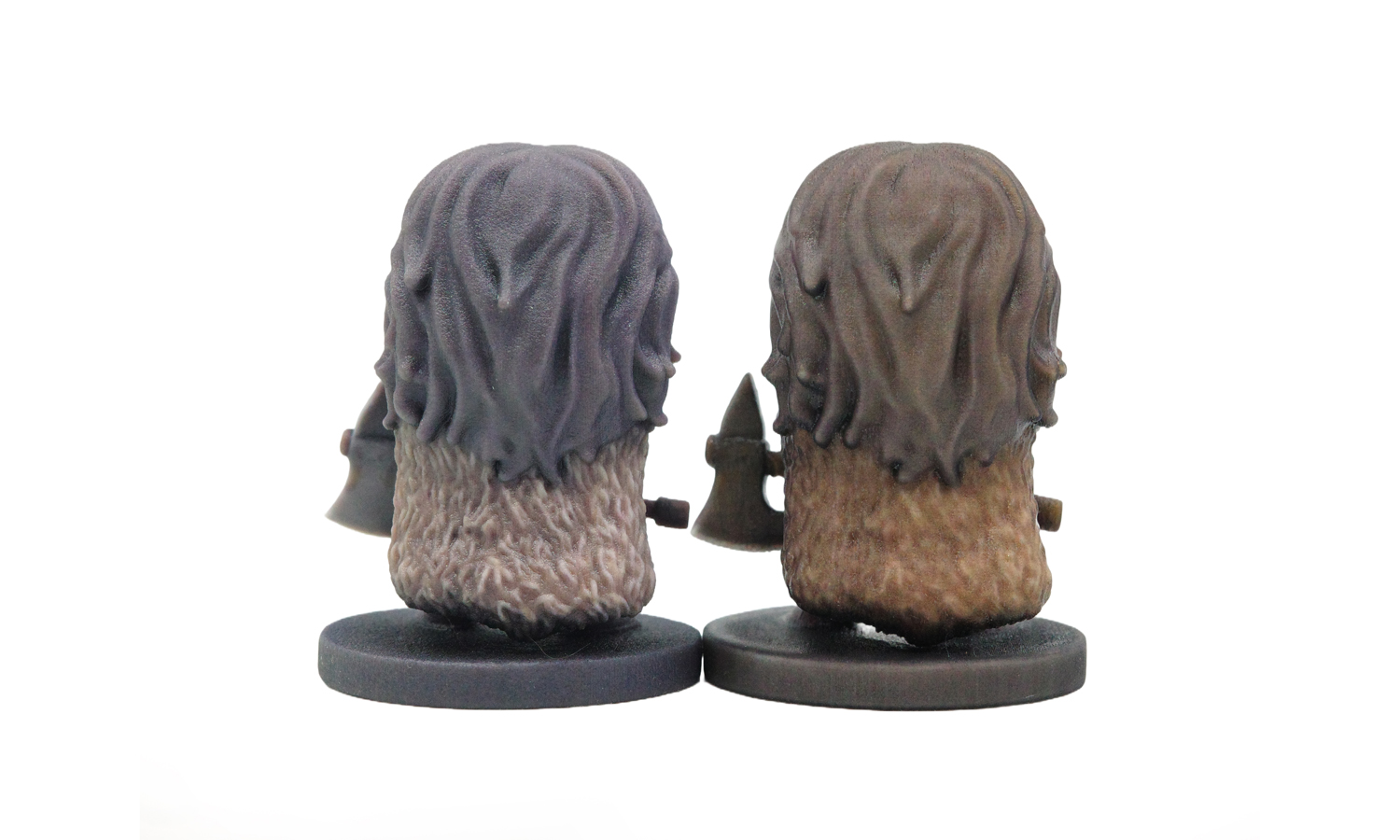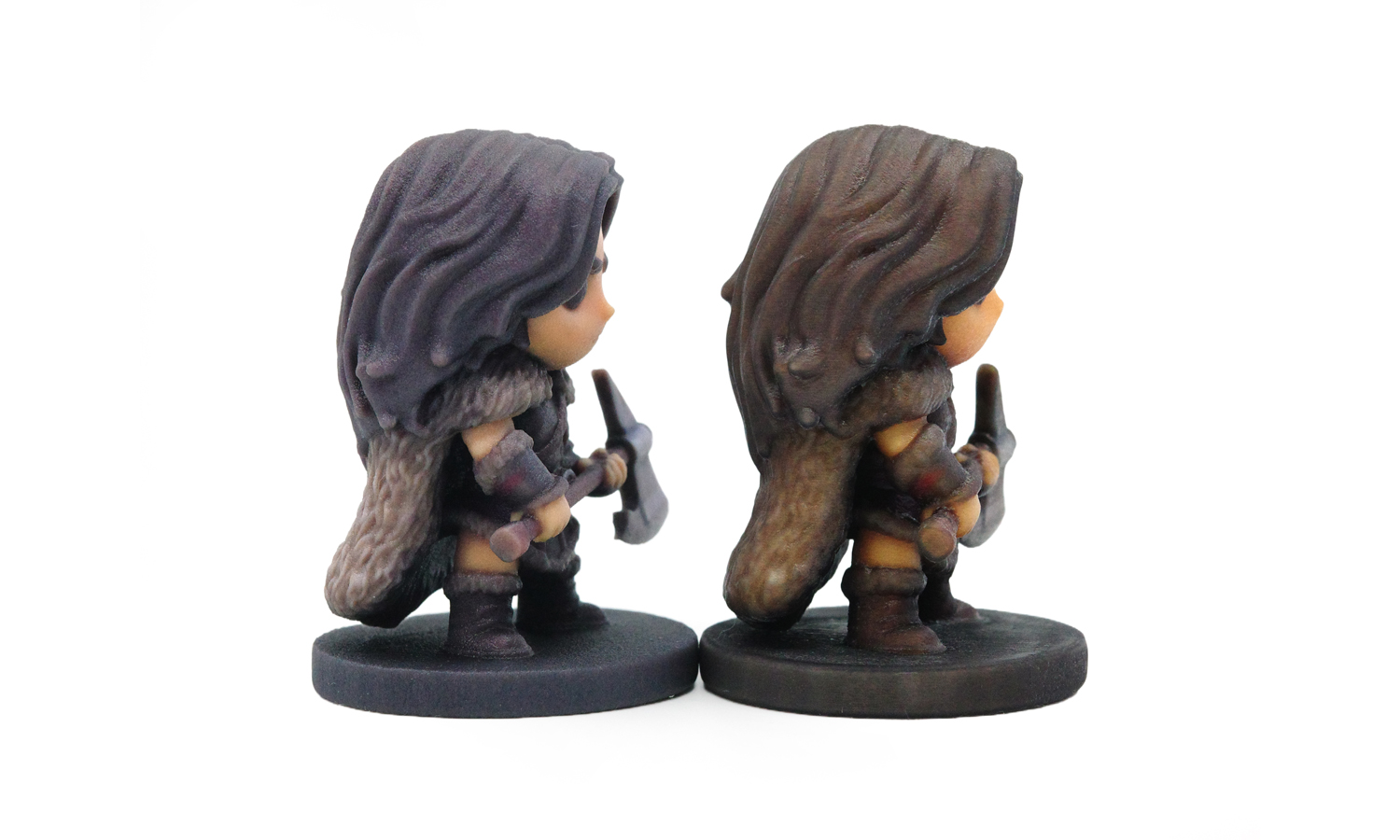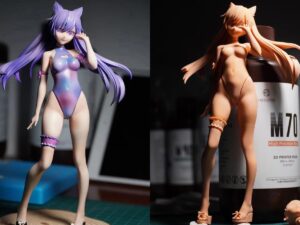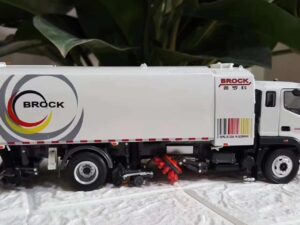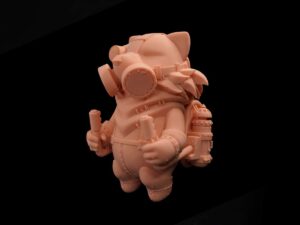Material Resin
Quantity 2 pcs
Price Range $100-1,000
Lead Time 3 workdays
Gallery
About Project
Full-color resin 3D printing is widely used for collectible figurines, tabletop models, and stylized character prototypes. In this comparison, we printed the same chibi warrior miniature using two popular full-color resin technologies:
- Left: WJP Full-Color 3D Printing
- Right: Mimaki Full-Color 3D Printing
Both options fall within a similar price range, so the decision depends mainly on visual preference and detail expectations-not budget.
1. Surface Smoothness & Layer Visibility
WJP Full-Color (Left)
- Features a smooth, matte, uniform surface.
- No obvious layer lines, even under strong light.
- Faces, armor, and edges appear clean and refined.
Mimaki Full-Color (Right)
- Shows reflective layer lines, especially visible in darker areas like the hair and base.
- Surface feels slightly rougher.
- Creates a rugged, weathered appearance that some may enjoy.
2. Detail Fidelity – Hair & Fur
WJP Full-Color
- Hair strands are well defined and clearly separated.
- Fur texture is deeper and more structured.
- Sharp edges on the armor and axe are preserved.
Mimaki Full-Color
- Hair and fur details appear softer and less pronounced.
- Texture seems more blended and organic.
- Suitable for models where a painterly or hand-crafted style is desired.
3. Color Tone & Style
WJP Full-Color
- Lighter, cooler, cleaner tones with less yellowing.
- Hair shows a purple-grey tint, giving a modern fantasy feel.
- More neutral color interpretation.
- Mimaki Full-Color
- Warmer and more saturated, with browns and yellows more dominant.
- A bolder, more dramatic, “wild” style-suiting gritty fantasy characters.
Important Note on Color Shifts
Both technologies show a certain degree of color shifting, and the final effect leans toward the characteristic palette of each system.
4. Price Comparison
- The cost of WJP and Mimaki full-color printing is quite similar, allowing clients to choose based on style and detail needs rather than price.
Conclusion
Both full-color resin technologies produce attractive, high-quality miniatures, but they excel in different styles:
- WJP Full-Color is ideal for clients who want: вң”crisp detail вң”smooth, uniform surfaces вң”clean, neutral, less yellow color tones
- Mimaki Full-Color suits clients who prefer: вң”warmer, heavier colors вң”a “wild,” rugged aesthetic вң”softer, painterly texture transitions
And because both have their own slight color shifts, the choice comes down to which palette the client prefers.
If you need guidance choosing the ideal full-color printing process for your upcoming miniature line, FacFox is ready to help.
Solution
- Step 1: The original chibi warrior model was prepared in 3D software, and the meshes were checked and repaired to ensure the figure was watertight and printable.
- Step 2: Full-color textures were created and mapped onto the model, and the color profile was adjusted for both WJP and Mimaki full-color printing requirements.
- Step 3: The textured model was exported and was imported into the WJP full-color printing software, where scale, orientation, and print resolution were set.
- Step 4: A second build file was generated for the Mimaki full-color printer, and matching parameters such as size and pose were applied so that the two samples could be compared fairly.
- Step 5: The WJP full-color miniature was printed layer by layer in resin, with color and geometry deposited simultaneously according to the prepared data.
- Step 6: The Mimaki full-color miniature was then printed in the same way on the Mimaki full-color resin printer, using its own slicing and color management settings.
- Step 7: After printing, both builds were removed from their respective machines, and excess resin and support structures were carefully cleaned away.
- Step 8: The parts were post-cured under controlled UV light so that the resin was fully hardened and the colors were stabilized.
- Step 9: Remaining support marks and loose particles were gently smoothed or blown off, and the bases were cleaned to ensure the miniatures could stand flat.
- Step 10: Each figure was inspected side by side, and the sharpness of details, surface smoothness, and color tone were evaluated and documented.
